Raphael catfish - Agamyxis pectinifrons
Scientific name: Agamyxis pectinifrons
Common name: Raphael catfish
Family: Doradidae
Usual size in fish tanks: 10 - 15 cm (3.94 - 5.91 inch)
014
Recommended pH range: 5.8 - 7.5
Recommended water hardness: 2 - 20°N (35.71 - 357.14ppm)
0°C 32°F30°C 86°F
Recommended temperature range: 20 - 26 °C (68 - 78.8°F)
The way how these fish reproduce: Spawning
Where the species comes from: South America
Temperament to its own species: peaceful
Temperament toward other fish species: peaceful
Usual place in the tank: Bottom levels
General Information
The Raphael Catfish (Agamyxis pectinifrons)—also called the Spotted Talking or Whitebarred catfish—is a peaceful, nocturnal doradid native to the Amazon River basin (records from Bolivia, Brazil, Colombia and Peru). It inhabits slow, turbid waters over soft bottoms, hiding by day in cavities, roots and leaf litter and emerging at night to forage. Typical adult size is 10–15 cm SL (≈4–6″). It produces audible clicks (“talks”) via its pectoral girdle when handled or stressed.
Food and Feeding
A bottom-feeding omnivore with a strong preference for meaty fare. Offer sinking catfish pellets/tablets as staple and rotate live or frozen foods (bloodworms, mosquito larvae, brine shrimp, daphnia, chopped earthworms, mysis). Feed at dusk or after lights out so it isn’t outcompeted by fast diurnal fish. Remove leftovers promptly to protect water quality.
Sexing
External differences are subtle and unreliable day-to-day. Mature females tend to be fuller-bodied when gravid; otherwise the sexes look very similar.
Breeding
No well-documented aquarium spawnings exist for this species. Older hobby lore suggests eggs may be laid at the surface among floating vegetation (sometimes even “bubble nesting”), but this remains unverified. Treat online claims cautiously unless accompanied by clear documentation and photos. In practice, assume that home breeding is unlikely.
Lifespan
Commonly cited at 10 years with many reports of well-kept adults living beyond a decade. Good filtration, consistent feeding and low stress are key to longevity.
Tank Requirements & Water Parameters
- Footprint & décor: prioritize floor area; provide soft sand or smooth fine gravel, abundant hides (caves, tubes, stacked wood), and dim/subdued lighting.
- Filtration & oxygenation: robust biofiltration; gentle–moderate flow; secure lids (spines can snag nets—use containers when moving).
- Water: pH ~5.8–7.5; hardness ~2–20 °dH; temperature 20–26 °C. Stability matters more than chasing exact numbers.
- Maintenance: weekly 25–35% water changes; vacuum lightly around but not inside tight hides to avoid stressing the fish.
Compatibility & Tank Mates
Generally peaceful and reclusive. Combine with calm mid-water fish of similar size that won’t nip barbels or outcompete at feeding time. Avoid very small fish or shrimp that may be eaten opportunistically at night, and avoid large predators.
Behaviour & Usual Place in the Tank
Bottom levels (demersal): spends the day hidden on/near the substrate; becomes active at night, patrolling the bottom for food. Provide multiple refuges to reduce daytime stress and territorial squabbles among conspecifics.
Care Notes
- Move with care—pectoral spines lock and can damage nets; use a jug or bag.
- Feed after dark to ensure adequate intake.
- Keep in a roomy, well-scaped tank; small groups are possible if each fish has secure hides.
Short Description
Raphael Catfish (Agamyxis pectinifrons) is a hardy, nocturnal Amazonian doradid. Provide sand, strong filtration, dim light and ample hides; feed sinking meaty foods after lights-out. Captive breeding is unconfirmed.
Q&A
- What’s its true range? Amazon basin (Bolivia, Brazil, Colombia, Peru); records outside this are introductions or misidentifications.
- Is it a community catfish? Yes with appropriately sized, peaceful tankmates—avoid tiny fish and aggressive species.
- Does it really “talk”? Yes. It produces audible clicks via its pectoral apparatus when handled or stressed.
Pictures
Bought by aqua-fish.net from jjphoto.dk.
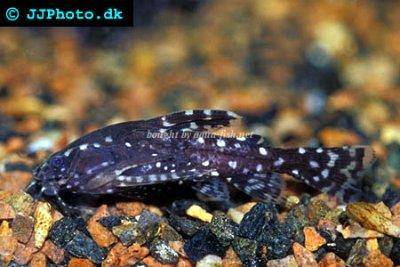


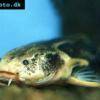 Spiny
Spiny 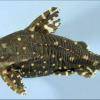 Thorny
Thorny 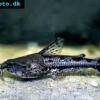 Marbled
Marbled 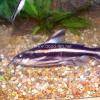 Striped
Striped